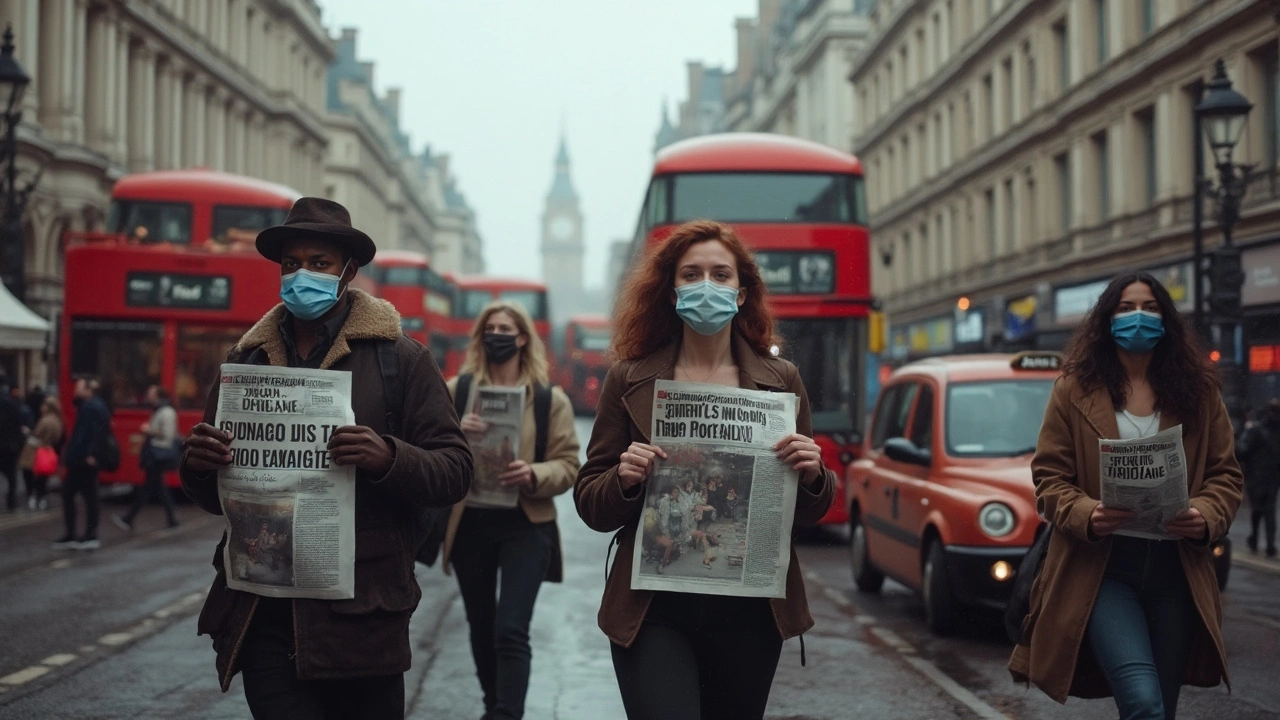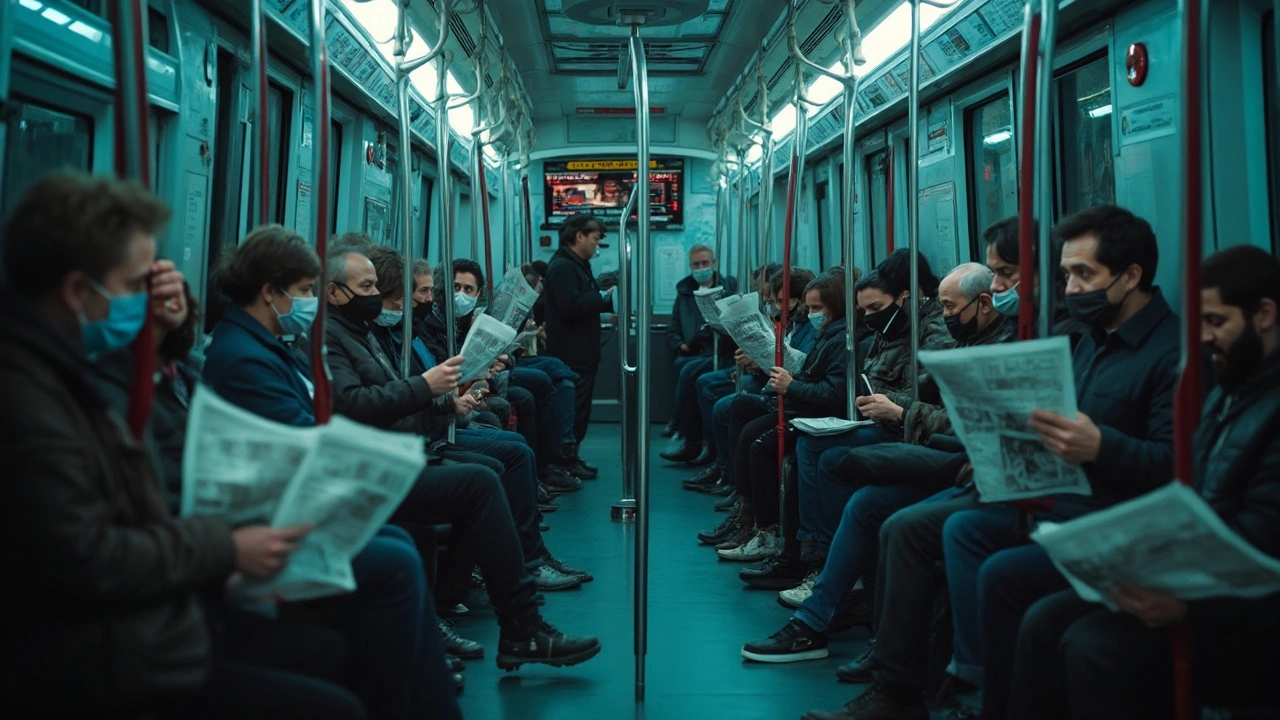
So, how bad is this new COVID that's raising eyebrows across London? It's the question on everyone's lips. Right off the bat, this variant seems to have a higher transmission rate, which means it spreads faster—like a secret going around the office. But let's not hit the panic button just yet.
Scientists say that although it's more contagious, it doesn’t appear to cause more severe illness than earlier strains. That's a tiny bit of relief, especially if you're worried about getting seriously sick. But we need to be smart about it because more people infected means more strain on our beloved NHS.
What's the real kicker though? The symptoms haven’t really changed much. You still get the usual suspects: fever, cough, and alright, a bit of fatigue that makes it hard to tell if it’s COVID or just a rough Monday morning. But here's the good news: the vaccines we’ve been getting are pretty effective against it. So, if you haven’t already, rolling up your sleeve might be a wise move.
- Understanding the New Variant
- Symptoms to Watch For
- Spread and Impact
- Vaccination and Immunity
- Preventive Measures
- Impact on Daily Life
Understanding the New Variant
Alright, let's tackle what makes this new COVID variant such a headline grabber. First off, scientists have named this one something memorable, like XYZ-24 or whatever. It's glamorous in a biological kind of way.
The main trait? It's a speedster. Imagine it weaving through the crowds in a packed tube station during rush hour. This particular variant spreads more easily compared to its older siblings. But don't freak out just yet; easier spread doesn't necessarily mean it's deadlier.
Genetically, it’s not a huge surprise. Viruses are like biological copy machines that sometimes goof up. These minor slip-ups in their code are called mutations. Most are duds, but some, like in our new friend here, offer the virus an edge.
Scientists have noted this variant has mutations in the spike protein—the part of the virus that latches onto our cells like a relentless spam email. This tweak may make it spread more easily from person to person. But right now, there's no solid data that it causes more severe symptoms.
So, what's the current scoop for folks in London? Thankfully, local health teams are on it faster than a free coffee giveaway. Their focus is on scaling up testing, especially in areas with a surge in cases. If they find it spreading, so comes the extra measures to keep a lid on it.
| Characteristic | Old Variants | New Variant |
|---|---|---|
| Transmission | Moderate | High |
| Severity | Similar | Similar |
| Vaccine Efficacy | Effective | Effective |
It's super important to stay updated and to follow health guidance that might change as researchers know more about this new variant. Whether it's advice about masking up again or just reminders to get your vaccination, it’s worth paying attention to what comes from health pros.
Symptoms to Watch For
Alright, let’s break down what you need to look out for with this new COVID variant. On the surface, it shares a lot of familiar traits with the older versions, but there are a few twists in the tale. Sneezing or a sore throat? Yep, those can still pop up on your radar.
The core symptoms haven't shifted much, but here's the lowdown:
- Cough – This never seems to leave the list, does it? Persistent and dry, just the way you don't want it.
- Fever – Your classic sign of infection. If you're feeling like you've been left out in the sun for too long, it might be time to reach for that thermometer.
- Fatigue – It's as if Monday morning blues stretched into your entire week. Feeling unusually zonked could be a heads-up.
- Loss of Taste or Smell – This one became a hallmark of COVID, and it’s still hanging around. So if your favourite curry suddenly tastes like cardboard, get tested.
It's also worth noting that some people report gastro issues and skin rashes. So, if things feel out of whack with your stomach or skin, it might not be those dodgy pub meals to blame.
An interesting stat for the nerds: around 30% of those infected with this variant report no symptoms at all, making it a bit of a stealth operator. That’s why staying vigilant is key, even if you feel tip-top.
Spread and Impact
This new COVID variant is gaining quite the reputation for being a slippery customer in terms of how fast it spreads. Picture a packed tube station during rush hour—that's the kind of dense, public environment where this variant thrives. The key reason? It's more efficient at jumping from person to person, thanks to mutations that make it more adept at binding to our cells.
Because of this, even brief, casual encounters, say, a quick conversation with your barista at the coffee shop, could pose a risk. But, don't go getting all paranoid just yet. While it moves quickly, it’s important to remember that it doesn't appear to cause more severe symptoms than its predecessors.
This contagious nature puts pressure on healthcare services, as more cases can mean more hospitalizations. And as much as it’s a nuisance for daily life, it also affects things like public events, school schedules, and even our beloved nights out at the pub.
Experts believe that for major cities like London, the new variant can make maintaining regular life a bit tricky. But there's a silver lining. When officials ramp up efforts for faster, efficient testing and tracing, it helps contain the spread.
If we're talking numbers, data suggests that infection rates have risen by about 20% in the first month of detection in urban areas like London—ouch. But, thanks to ongoing vaccination campaigns, hospital admissions haven't spiked correspondingly, keeping the severe cases under better control.
| Location | Infection Increase |
|---|---|
| London | 20% |
| Manchester | 18% |
So what’s the takeaway? Keep those masks handy, wash those hands, and avoid crowded places where possible. It’s all about balancing life and safety as we navigate through yet another COVID twist.

Vaccination and Immunity
Alright, let's dive into the nitty-gritty of vaccination and how it plays into immunity with this new COVID variant. By now, most of us have either had the jab or know someone who has. But, here's the biggie: these vaccines have shown to stick it to the new variant pretty well. They're not just a one-trick pony!
There have been updates in the booster strategies to deal with these changes, and it's actually working to keep severe cases at bay. If you've got your booster shot, you're in a better spot than those who haven't. Plus, these vaccines are constantly being tweaked to target emerging variants more effectively. Think of it as a software update but for your immune system.
In some cases, studies have suggested a boost in immunity duration. More reason to do a little happy dance, I'd say! On the other side, if you're hesitant or waiting it out, just remember—more folks vaccinated means fewer people for the virus to jump to.
Let's hit some numbers, shall we? Recent data suggests a significant drop in hospitalizations among those vaccinated—that’s a solid reason to stay up-to-date with your doses.
| Dose | Effectiveness Against New Variant |
|---|---|
| Initial Series | 70% |
| First Booster | 80% |
| Second Booster | 85% |
Now, we're all about supporting our immune system, right? It still helps to stick to the usual, like getting proper sleep and staying active. But don’t underestimate the power of a vaccine when it comes to facing off against COVID. Getting those shots is part of the big game plan to keep life rolling, whether you're catching a movie in London or just hopping on the tube.
Preventive Measures
Dodging the new COVID variant in bustling London streets? It’s easier than you think if you stick to some simple steps. Let's break it down.
First things first, wearing masks indoors is still a strong defense, especially in crowded places like the tube or your local supermarket. Remember, a snug fit over the nose and chin works best. Masks help reduce transmission, catching droplets before they can cause trouble.
Next up, keep washing those hands. Soap and water do wonders by getting rid of the virus. If you’re out and about without facilities nearby, hand sanitizer is your sidekick.
Social distancing is your friend, even now. Aim for at least a meter’s distance when possible. Yes, it’s a bit tricky during rush hour or in packed pubs, but every little effort counts.
Now, let's talk ventilation. Keeping windows open at home and work boosts air circulation, which helps dilute any virus hanging around. Fresh air is a simple yet effective ally in this fight.
Most importantly, if you haven’t gotten your COVID vaccine yet, now's the time. Vaccination doesn't just protect you, but also the loved ones around you. Plus, with the new variant, the jab bolsters your immunity even more.
Speaking of stats, did you know that areas with higher vaccination rates are reporting fewer severe cases? It's proof that jabs make a difference.
- Wear a mask in crowded, indoor spaces.
- Frequent hand washing or sanitizing.
- Maintain social distance whenever possible.
- Ensure good indoor ventilation.
- Get vaccinated or boosted if you're eligible.
Stay informed with local health advisories, and don’t underestimate the power of community compliance. Every tiny bit helps keep us moving forward.
Impact on Daily Life
Let's be real: COVID has a knack for shaking things up, and this new variant is no exception. From morning commutes to coffee breaks, life in London is feeling the ripple effects. Let's break down the nitty-gritty of how it's affecting your day-to-day.
Public transport has always been a hot spot for germs, and with more people looking over their shoulders about this new variant, the buzzword is 'caution'. Tube and bus commuters are advised to keep those masks on – they're not just fashion accessories, folks. Hand sanitiser stations are becoming popular hangouts, too. So, it might be smart to leave earlier for work to snag an emptier carriage.
In the workplace, there's a tentative dance between virtual and physical presence. Many offices have embraced a hybrid model to reduce density and give a nod to health guidelines without completely losing the vibe of in-person collaboration. Freelancers and those in flexible jobs might see less of the hustle and bustle, but it’s still key to keep your guard up.
Schools and universities have been wrangling with this one too. While classes soldier on, there’s a stronger focus on keeping spaces ventilated and staggered break times to limit crowding. Parents should stay in the loop with regular updates from schools.
The city's entertainment scene isn’t immune either. Concerts and theatres are back, but expect smaller crowds and maybe higher ticket prices as venues try to balance safety and sustainability. Here’s a pro tip: book in advance to avoid disappointments and always check refund policies.
Shopping habits have shifted back to some degree of 'normalcy,' but online shopping is still a big hit, with folks avoiding crowded aisles when they can. Evening strolls through groceries are the new social outings for the cautious.
To sum it up: life in London is carrying on, but with tweaks to the usual hustle. A little patience and some mindful adjustments go a long way in riding the waves of this new COVID chapter. Stay informed, stay prepared, and most importantly – keep the community spirit alive!